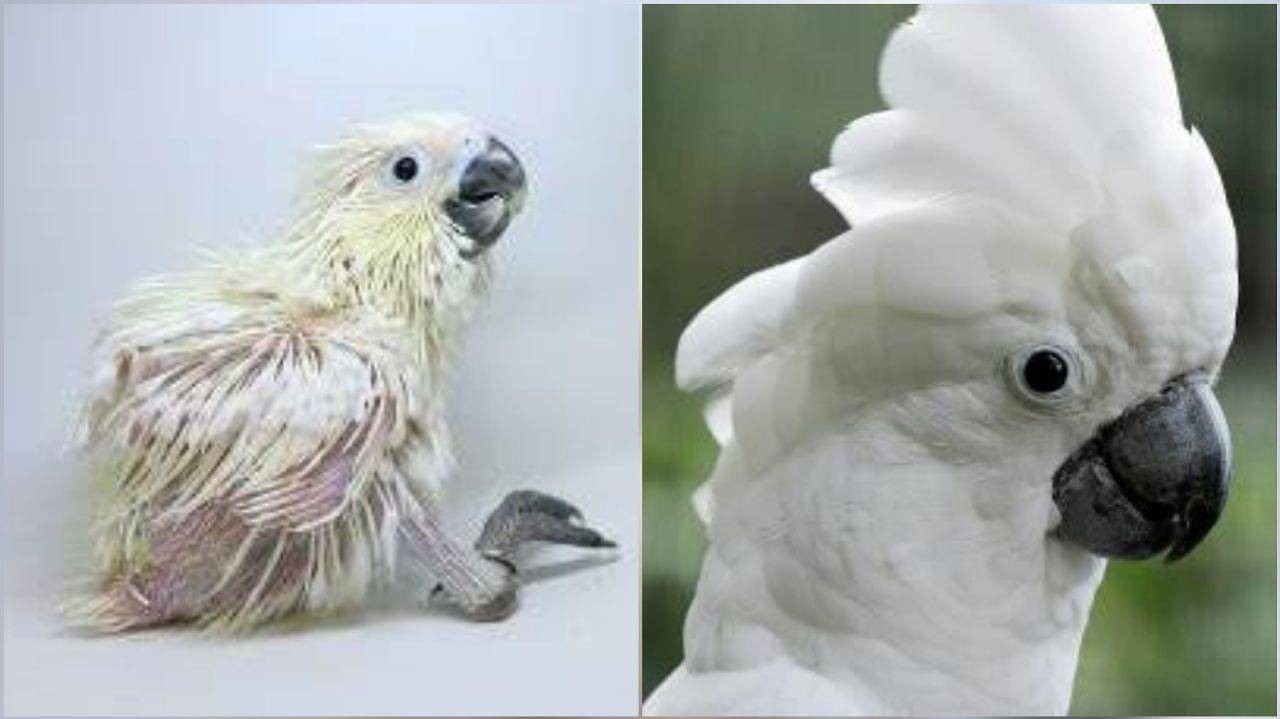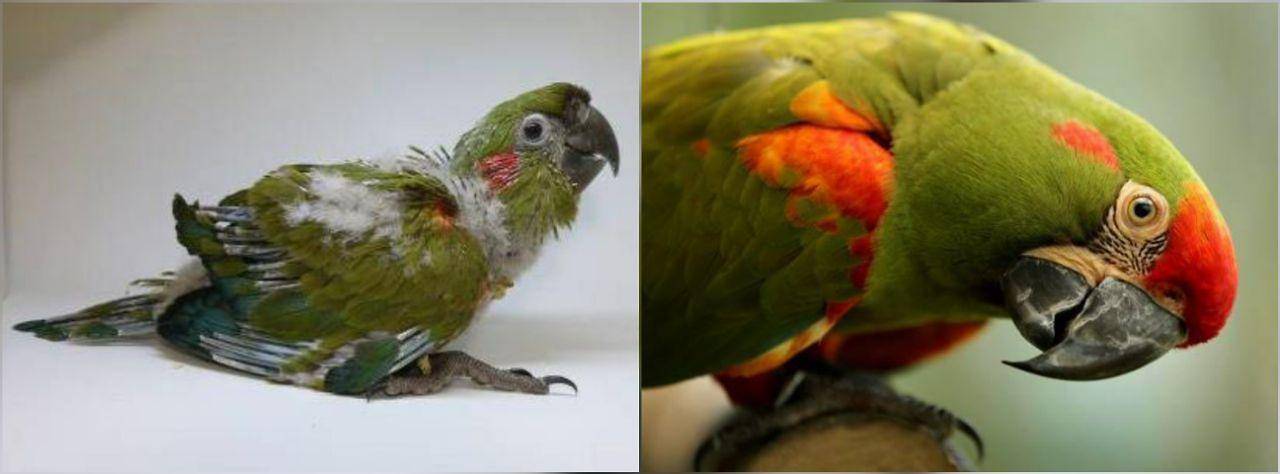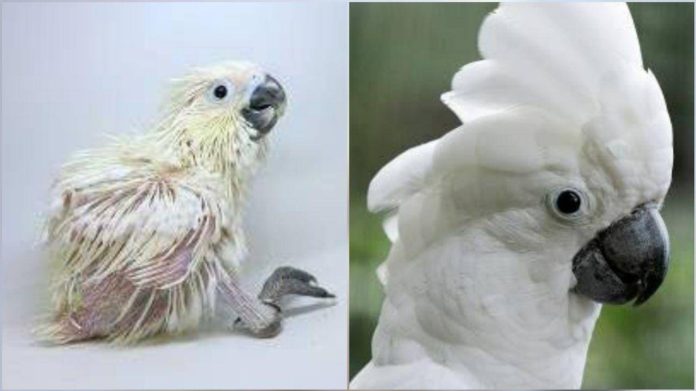SINGAPORE: More than 100 chicks have hatched at Jurong Bird Park since the start of 2020, with a fifth of them from threatened species.
Wildlife Reserves Singapore (WRS) said on Friday (Jul 24) that Jurong Bird Park had three endangered white cockatoos hatch – a species under severe threat from poaching, and listed as endangered in the International Union for Conservation of Nature’s Red List of Endangered Species.

A 36-day old white cockatoo (left) and adult (right). The white cockatoo is also known as the umbrella cockatoo, named after its striking head crest shaped like an umbrella. (Photo: Wildlife Reserves Singapore)
Jurong Bird Park is “one of a handful of zoological institutions breeding the species, contributing to the international zoo community’s efforts to sustain healthy and genetically diverse populations”, said WRS.

A red-fronted macaw at 46 days old (left) hatched in Jurong Bird Park’s Breeding & Research Centre and a fully grown adult of the same species (right). Threatened by habitat loss and poaching, breeding the critically endangered species under human care is crucial for their continued survival. (Photo: Wildlife Reserves Singapore)
Other chicks include a pair of critically endangered red-fronted macaws, as well as three blue-eyed cockatoos, a vulnerable species “threatened in the wild and very rare in zoological parks”. Jurong Bird Park is one of two zoological institutions breeding the blue-eyed cockatoo.

A pair of blue-eyed cockatoos at 25 days old (left) and adult (right). Jurong Bird Park last saw hatchlings of these species four years ago. (Photo: Wildlife Reserves Singapore)
A burrowing owl and Western long-tailed hornbill were also the first in-park hatchlings for their species at Jurong Bird Park.
Various chicks, which are either species of conservation value or ones with inexperienced parents, are hand-raised at Jurong Bird Park’s Breeding and Research Centre to maximise their chances of survival.
“Hand-raising chicks can be challenging. They are delicate when young and have a demanding feeding schedule where they have to be fed up to seven times a day. But it is very rewarding to see the chicks grow and eventually fledge.
A parent black-faced spoonbill feeds its chicks at Jurong Bird Park’s wetlands exhibit. 2020 saw three hatchlings, making a total of five chicks successfully bred since the arrival of the birds from Japan in 2018. (Photo: Wildlife Reserves Singapore)
“It gives us even more fulfilment knowing that we have directly contributed to the continued survival of these threatened species”, said Mark Rusli, junior animal care officer, and hand rearer at the Breeding and Research Centre.
Their caretakers play the role of foster parents, feeding the chicks at regular intervals and weighing them to track their progress.
The birds will be transferred to their respective aviaries when they are old enough.

Jurong Bird Park’s first ever Western long-tailed hornbill chick is now a juvenile at over two months old. It was raised by its parents in a breeding aviary but was having some problems adjusting to the outside world after fledging. The decision was made to keep it safe in the Breeding & Research Centre until it is strong enough to fly before rejoining its parents in the aviary. (Photo: Wildlife Reserves Singapore)
Jurong Bird Park reopened on Jul 6 after a three-month closure as part of Singapore’s “circuit breaker” measures to curb the spread of COVID-19. It houses about 3,500 birds across 400 species, 20 per cent of which are threatened.
Jurong Bird Park’s Breeding and Research Centre focuses on the propagation of threatened species and research on breeding biology.
The park is also an active participant in several coordinated conservation breeding programmes, and directly manages some of these programmes.





